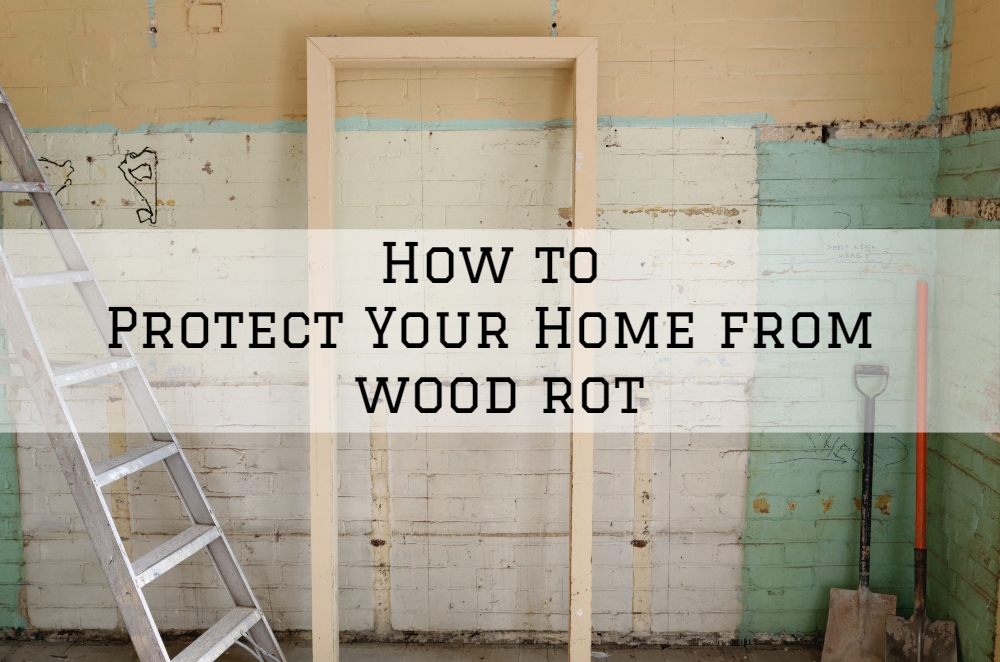Wood rot is a vital decomposition process in nature –it helps turn the fallen logs into nutritious soil. However, when this happens to your home in Clinton Township, MI, it could lead to major structural problems such as deteriorated support posts and beams, ceiling joists and rotted floor, and destroyed roof decking. In worst scenarios, it could even send your house crumbling down.
The cost of wood rot damage can run anywhere from tens of thousands of dollars to losing your entire house, especially for log houses and other designs that predominantly use wood material. Since wood is the more prevalent home building material, we thought in this article we should take a quick look at the causes of wood rot and how to prevent it.
What Causes Wood Rot?
Wood rot is a decaying process that is primarily triggered by a combination of fungi and moisture. Fungi prefer surfaces that are continuously damp or wet for them to grow successfully. The most popular fungi that cause wood rot are loosely classified according to the effect they create during the rot.
• Brown Rot: this is often referred to as “dry rot.” This is because the surface of the wood remains relatively dry during the attack. The fungi destroy the cellulose in the wood causing it to shrink, turn brown and break into small cubicle bits.
• White Rot: this can be characterized by the wood turning whitish or light yellow, and spongy. White-rot fungi break down the lignin leaving the light-colored cellulose behind.
• Soft Rot: this type of rot happens at a much slower pace than the white and brown rot. Soft-rot fungi can survive in both cold and hot conditions, where they break down cellulose, leaving the wood with a honeycomb-like appearance.
How to Prevent Wood Rot
The best way to prevent wood rot from damaging your home is to pay attention to common problem areas because that is where the rot typically begins. Some of the most common trouble spots include:
• Holes and cracks in the caulking around doors, windows, dryer vents and so on. Consider applying new caulk to any of such openings.
• Sagging and leaking gutters and downspouts. You could do a quick DIY gutter repair or replacement. But if you have a multi-story house, you might want to call a pro for help.
• Stains under eaves, on interior ceilings and around fireplaces. These are popular telltale signs of a roof leak. Have your roof inspected and fixed immediately to prevent any further damage.
• Peeling and cracked painted surfaces. Paint is meant to protect your siding against moisture from whatever source. If it’s a small area, you can scrap and sand the peeling paint before applying a primer then painting. However, extensive paint damage might mean your home needs a new professional repaint done.
• Tree branches and shrubbery closer to your siding and roofing. Three branches can rub against the siding and ruin the protective paint. It can damage the roof too if left for too long. This should be trimmed back to at least 3-feet away from your siding.
• Dirt, twigs, and leaves between decking boards. These often trap moisture and creates a conducive environment rot-fungi. Use an awn or a screwdriver to pry out the gunk and flush out any remaining dirt using a garden hose.
The Bottom Line
As you can see, preventing wood rot is really just a matter of proper house maintenance, but most importantly, understanding and paying attention to common problem areas. If you need professional assistance repainting your home, whether it’s the interior, exterior, deck, staircase or floor, our experienced team at Aspen Painting can help.
We offer professional residential painting in areas around Horsham, PA, Ambler, Dresher, Ft. Washington, and Blue Bell. Simply give us a call to get started.

